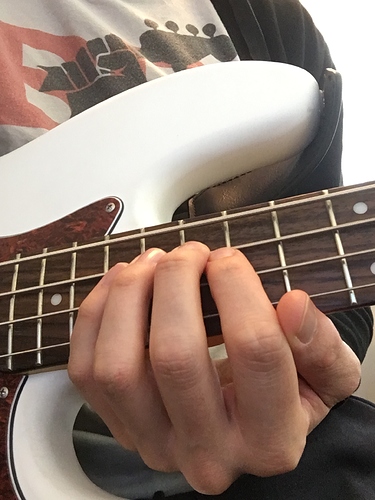Hey @tamaraster, thanks for the video. Some good thoughts already in this thread, I’ll share some more. I don’t have an immediate “ah-ha” solution for you, but hopefully something helps:
First of all, I don’t think you’re in as bad shape as you think - you’re able to get those D and G string notes pretty decent, and the index note on the A string is okay too. Right? So it’s really just reaching the pinky onto the lower strings that’s causing the worst of it, if I’m understanding you.
It seems like you might want to mess with bass position / body position a bit - your arm looks like it’s getting a little cramped on your torso, which will limit your mobility. I think that’s (at least part of) why it helps to angle the neck up. You could also try:
- shifting the bass to your left a tiny bit more
- tilting the neck forward a bit, like you wanted to point the headstock to a point in front of you (just a very slight move in that direction), so there’s more space between your body and the back of the neck up there
If you’re gonna keep your thumb in line with your fingers rather than behind the neck like that, try to keep it in a more neutral position, resting up against your index finger. You’ve got it stretched so far out that it might be affecting the mobility of your fingers. More like this:
Any of that help?
@Gio, you have any other ideas? Things that have helped your students get comfortable at the top of the neck?
